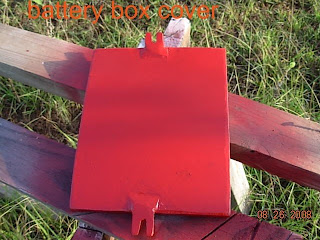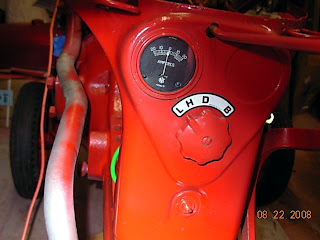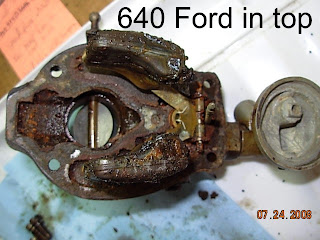Today I cleaned off the valve access cover and the side of the engine where the cover was. It took me two hours to get that old gasket material off. There was also some squeeze tube gasket material along with the cork. I used a stiff wire brush, sharp pry bar and a dental pick to get it off, then primed and painted the cover. The tappets are adjusted by using two small wrenches. The #1 spark plug is removed and the engine cranked (I have a Ford crank) until compression is felt, then the pointed on the left side of the engine is aligned with the notch on the fly wheel. At first I did not follow that plan exactly and the valves were open at #1 cylinder so I could not get the .013 feeler gauge in place. After a while I figured it out and found most of the tappets were close to where they should be. I tweaked a few. One of the nice things about these old Cubs is the firing order is cast into the engine – 1-3-4-2. The engine is revolved half a turn following the first cylinder. I just followed the firing order and completed the adjustments.
While doing this section of the tractor refurbish, I discovered the engine serial number – in the 60,600 range – and the casting date. The year was coded with a letter. My old Cub engine was manufactured in October 1948. I believe the tractor was assembled in mid January 1949.
Since I was waiting for paint to dry, I removed the access covers to get to the commutators of both the generator and the starter motor. They look okay to me so I just used compressed air to blow out dirt, then I proceeded to clean up the threads on the small screws and nuts which hold the access covers together. At this point I am waiting for paint to dry on the cover for the starter, and making a new liner for the generator cover. The old one fell apart in my hands.
The new battery is in the refurbished battery box. It is sitting on a piece of 4X4 so I can remove it easily. As soon as I can get to a suitable store I will get some flat tie down material to cut it for a means to remove the battery when it is all the way down in the battery box. This particular battery and another I saw have no lifting handle – so I will make one.
Tractor Boy






























































